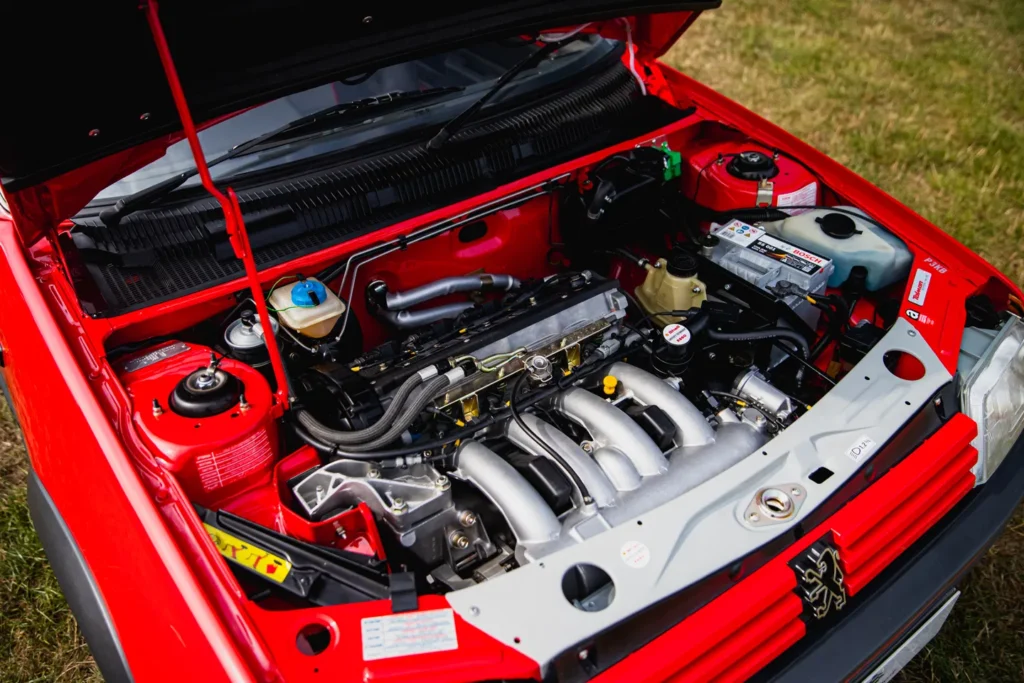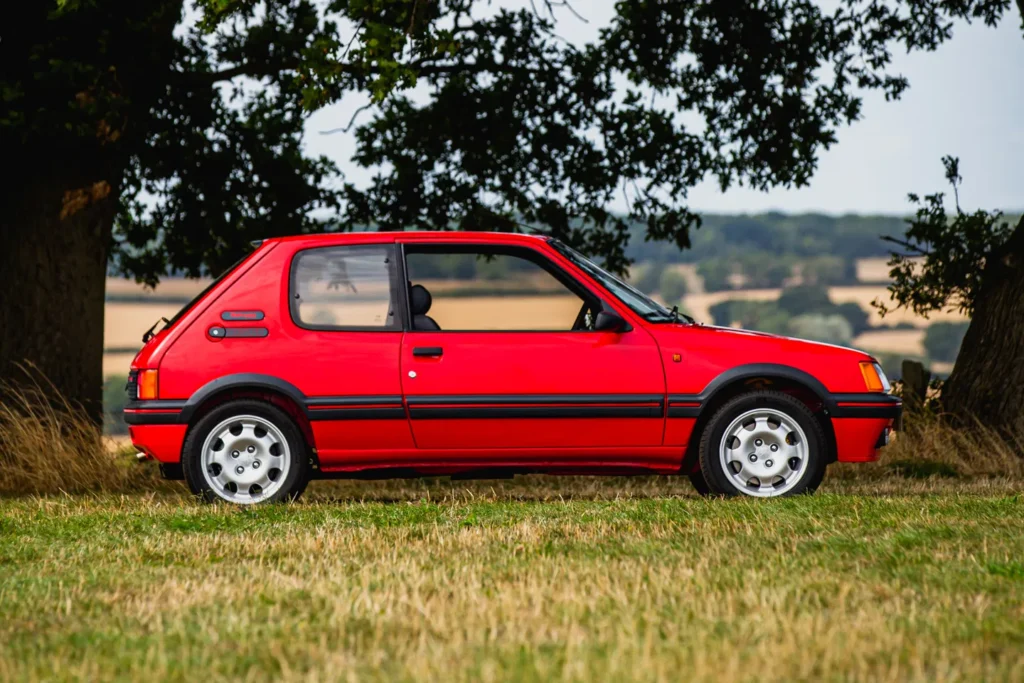The Peugeot TU series of engines was fitted to most of the smaller Citroen and Peugeot cars in capacities from 1124cc to 1587cc. The basic design has an overhead cam running inside bores in the cylinder head and opening the valves via rockers. Valve clearance is set by manual adjustment of a screw and locknut. Early engines had an aluminium block with wet liners like the XU and later engines had a cast iron block.
There are in fact a staggering number of slightly different variants of the engine all with their own engine code which makes sourcing parts a nightmare at times. Just sticking to the 1361cc engine we are concerned with here you can have iron or alloy block, small or big valves and a variety of stages of tune from about 55 bhp to 100 bhp. There is also the very similar TU24 1294cc engine which has the same bore but a smaller stroke and which was fitted to the Citroen AX GT and the Peugeot 205 Rallye.
The lower spec 1361cc engines have a 36.7mm inlet valve and a 29.2mm exhaust valve. The engine you really want to start with for tuning purposes is the higher spec TU3F-J2K iron block engine which was fitted to the Citroen AX XSi and the Peugeot 106 XSi. It has a higher compression ratio and 39.4mm inlet valves and 31.3mm exhaust valves – the same size as were fitted to the 1587cc engines. The inlet valves have a 30 degree valve seat rather than the more usual 45 degree one which means some care has to be taken when modifying the cylinder head but more on that anon.
Whether alloy or iron block the bottom end is pretty much indestructible. It has a 75mm bore and 77mm stroke in the 1361cc variant and a 73.2mm stroke in the 1294cc one. Pistons, being small in diameter, are fairly light and the rods are sturdy with very strong big end bolts. No matter what the stage of tune I haven’t seen anything in a bottom end of one of these engines break, even when using over 8000 rpm on a regular basis. The alloy block is lighter but a bit more complex to build and perhaps slightly more prone to head gasket problems than the iron block engine. The rods, pistons and piston rings are also different between the two types but this doesn’t affect the power capability.
One thing you need to watch for is that the higher spec XSi cast iron engine actually uses the same block as the 1587cc variant and therefore also uses the same oil pump rather than the pump fitted to base model cast iron 1361cc engines and the alloy engines.
In summary I’d say that all you have to do with any of these engines is rebuild to a good standard with OE quality parts and it’ll withstand anything you can throw at it. No need to spend out on forged pistons or rods.
Cylinder Head

The big valve derivative, which as mentioned above has the same size valves as the 1600 engine is capable of very high power outputs. Well over 100 bhp per litre is possible while still retaining good tractability – a pretty much impossible task with bigger engines like the XU. The reason is that the valve area per cc of engine volume is very high compared to larger engines. Running through the power prediction equations in the pp03.htm article we can see that the 39.4mm inlet valves have a total valve area of 4877 sq mm and dividing by 30 gives us a power target in ultimate no expense spared tune of 163 bhp. That means that a reasonably achievable target of 90% of that is 147 bhp and that’s certainly not impossible to get.
Port shapes are quite critical and the 30 degree valve seats on the inlet valves means very careful work on the seat widths and the shape of the throat and bottom cut are needed to get optimum flow. The valves are already fairly close to the chamber wall in the 1361cc engine so bigger valves are not an easy proposition although it would be possible to squeeze an extra 1mm or so on the valve size with careful work. To date I haven’t looked into this as the power potential is already very good with standard components.
You need to be aware that the smaller valve head has a head gasket with perfectly round bores in it and the higher spec bigger valve engine has a gasket with small cut-outs adjacent to the valves.
CAMSHAFTS
Because the engine has very high flow per cc it doesn’t need long duration camshafts to make it work. The worst thing you can do is use too much cam duration which will lose huge chunks of bottom end and mid range power while not adding much to the top end. The best all round camshaft by a mile is the Cat cams 645/646 profile which has a fairly mild 244 degrees duration at 1mm lift and 11.25mm lift. Both cams have the same lobe profile but on slightly different timings. I generally stick with the 645. It will pull from 3000 rpm to 8000 rpm and is ideal for track days, sprints, rally and hill climb use.
It’s even very road driveable except in the heaviest of traffic. If you are building a pure road motor for daily use you might want to consider the 605 or 602 profiles but the 645 is hard to beat. It needs a compression ratio of about 11.0:1 to work properly which you can get by skimming the block or head. You might also need to put small cut-outs in the pistons to give the required clearance but most engines manage without. Always do a dummy build and measure these things accurately though. With throttle bodies, a well ported head and this spec cam I’ve seen over 140 bhp.
For higher spec engines you can use a bit more duration but you also need higher compression ratios and will definitely need cut-outs in the pistons.
Induction System
The standard Series 1 Rallye plenum manifold is very capable and you can get over 130 bhp on it with a 645 cam without resorting to throttle bodies. It won’t show the power or torque that a well set up TB system can give though.


